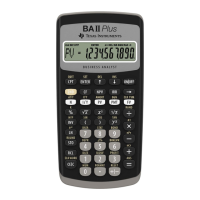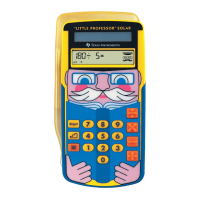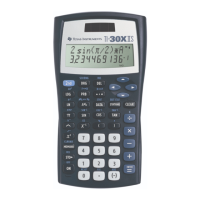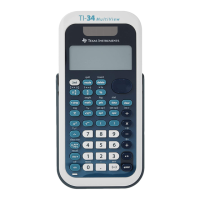Appendix B: Technical Reference 914
Angle
Specifies the units in which angle values are interpreted and displayed in trig functions
and polar/rectangular conversions.
Exponential Format
Specifies which notation format should be used. These formats affect only how an
answer is displayed; you can enter a number in any format. Numeric answers can be
displayed with up to 12 digits and a 3-digit exponent.
Note: If you select NORMAL, but the answer cannot be displayed in the number of digits
selected by Display Digits, the TI-89 Titanium / Voyage™ 200 displays the answer in
SCIENTIFIC notation. If Display Digits = FLOAT, scientific notation will be used for
exponents of 12 or more and exponents of -4 or less.
Complex Format
Specifies whether complex results are displayed and, if so, their format.
F:FLOAT 1
G:FLOAT 2
…
Q:FLOAT 12
If the integer part has more than the selected
number of digits, the result is rounded and
displayed in scientific notation.
For example, in FLOAT 4:
12345. is shown as 1.235E4
1:RADIAN
2:DEGREE
3:GRADIAN
1:NORMAL Expresses numbers in standard format. For
example, 12345.67
2:SCIENTIFIC Expresses numbers in two parts:
• The significant digits display with one digit to the
left of the decimal.
•
The power of 10 displays to the right of E.
For example, 1.234567E4 means 1.234567×10
4
3:ENGINEERING Similar to scientific notation. However:
• The number may have one, two, or three digits
before the decimal.
• The power-of-10 exponent is a multiple of three.
For example, 12.34567E3 means 12.34567×10
3
1:REAL Does not display complex results. (If a result is
a complex number and the input does not
contain the complex unit i, an error message is
displayed.)
2:RECTANGULAR Displays complex numbers in the form: a+bi
3:POLAR Displays complex numbers in the form: re
i
q
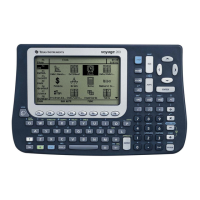
